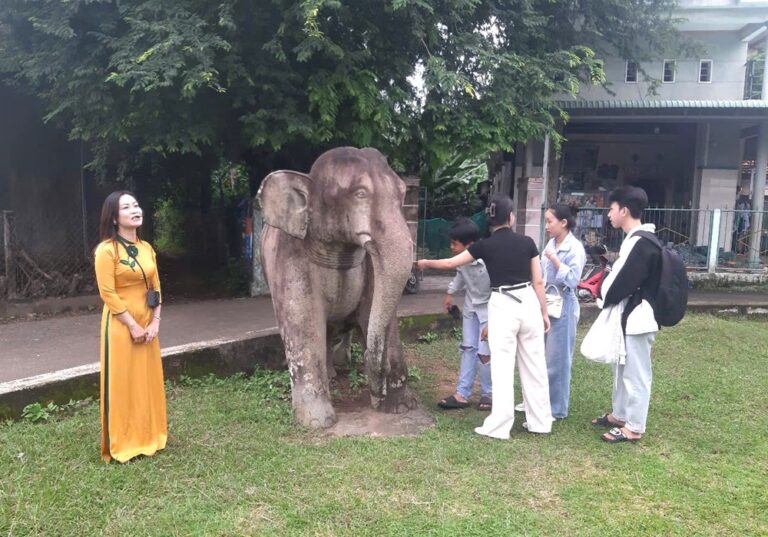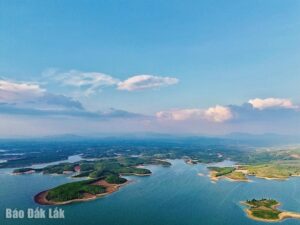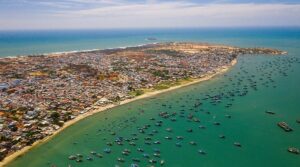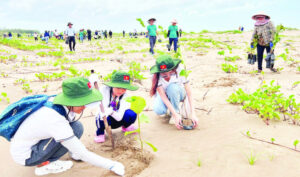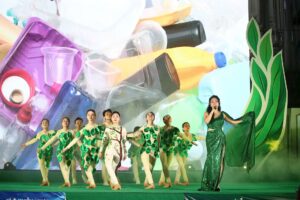The conservation of Dong Ho Lake is one of several important objectives that the Kien Giang provincial People's Committee will implement in the following years, in an aim to enhance economic development and deal with climate change.
The statement was made by Le Van Thi, chairman of the People's Committee, at an international seminar held in Ha Tien on Friday.
The seminar's main objectives included assessing the current social and natural conditions surrounding Dong Ho Lake and its potential.
Identifying these factors would help experts, scientists and officials develop policies on conservation, exploitation and development of the lake, said Lam Hoang Sa, vice-chair of the People's Committee.
He said that information presented at the conference by scientists, managers and professionals would be used by provincial departments in their implementation of conservation and sustainable development programmes for the lake in the context of climate change and the rise of sea levels.
"It will also be used to support planning for Ha Tien to become a city of culture and tourism," he said.
"Ha Tien town is well-known for its numerous tourism attractions and historical monuments, and has been recognised as a border-gate economic zone and key tourism site of Kien Giang Province," Thi said.
"The karst mountain ecosystems and wetland in Ha Tien is considered to be of special importance. The saltwater Dong Ho Lake is a highlight of Viet Nam's coastal lagoon system."
Located in the centre of Ha Tien township, the 1,384-ha lake with 903ha of water surface, surrounded by 249,53ha of mangrove forests and 171,23ha under aquaculture cultivation plays a pivotal role in the economic, cultural and social life of residents, and is also valued for its biological diversity.
Sa said that it was urgent to plan for conservation of the ecosystem and hydrological regulation as well as the mitigation of flood damage downstream of Giang Thanh River.
All related departments and agencies had to begin working together soon on these goals, he said.
However, Sa noted that no official scientific research or statistical analysis and evaluation of the lake's value had been conducted.
More than 200 delegates including many foreign experts and scientists attended the conference delivering 20 presentations on three major topics.
These topics included the conservation of wetlands, mangroves and biodiversity of Dong Ho Lake, and the relationship between conservation and development of Dong Ho Lake in the context of climate change and sea-level rise.
It also included examining the means of livelihood, environmental problems and treatment, planning for the lake area, and developing strategies for conserving and promoting cultural heritage of Ha Tien to develop a tourism industry.
Prof Nguyen Ngoc Tran, director of the Cuu Long (Mekong) Development Research Institute, said Dong Ho Lake was the shallowest place in the sub-region of Ha Tien of Long Xuyen Quadrangle, with water running from Hau River.
"The environment of Dong Ho is under great pressure from the economic development of Ha Tien, particularly from urbanisation. Thus, between Dong Ho and the Gulf of Thailand, the river and the sea flows are becoming imbalanced.
Le Duc Tuan, director of the Institute of Can Gio Mangrove Forest, said that "Dong Ho Lake is a reservoir with several mangrove forests. The preservation of the lake should be given appropriate attention by the local authority and scientists, policymakers, provincial administration and the central government."
Dr. Thai Thanh Luom, director of Kien Giang Province's Department of Natural Resources and Environment, said the lake was downstream of the Giang Thanh River which originated from Cambodia and flowed across the Ha Tien border and into the lake out to the sea adjacent to both Viet Nam and Cambodia.
Because the lake originates from the natural river and is in the southwestern part of the country, the floral and fauna distribution is dominated by three types of ecosystems: the riverside ecosystem, a freshwater source from upstream, and a brackish ecosystem, the latter an intermediary between salty fresh water and the salty coastal ecosystem.
"Because Dong Ho Lake has such high biodiversity, surveys of the area need to be undertaken to understand fauna and flora compositions there. Another task is to classify species and determine rare or endangered species, and the endemic species at Dong Ho Lake," Luom said.
There are about 704 families with about 3,006 people living mainly in the southwestern and southern areas near the lake. Most of these families live in poor conditions so it is of paramount importance to have proper planning and research conducted of the local community in the Dong Ho Lake area as soon as possible, according to Mai Van Huynh, chairman of the People's Committee of Ha Tien Township.
Huynh said that the provincial administration should develop policies to help local people find decent jobs so they would not continue to destroy the area's natural resources in order to make a profit.
Dr. Sharon Brown, chief of the Kien Giang Biosphere Conseveration Project and Climate Change in Coastal Ecosystem Programme, said in its conservation plan the province should have regulations that species which fish species in the Dong Ho Lake could be exploited and how long this exploitation could last. The aim is to protect biodiversity and prevent extinction of the variety of species.
The event was jointly organised by the Kien Giang People's Committee and Germany's GIZ Viet Nam under the support from UNESCO Viet Nam and the Australian Development Agency.



